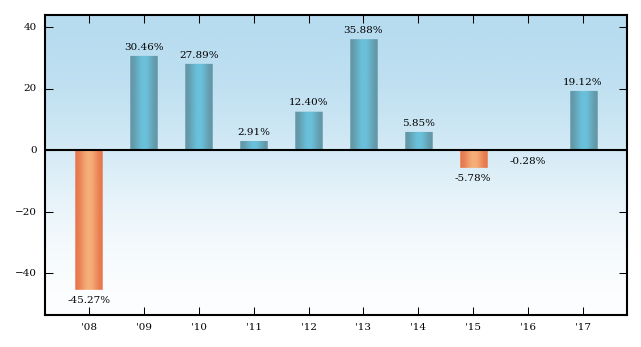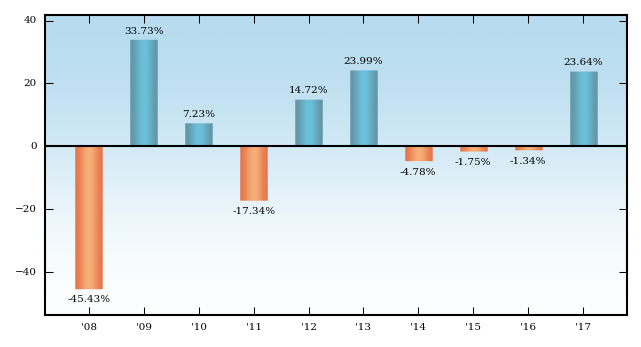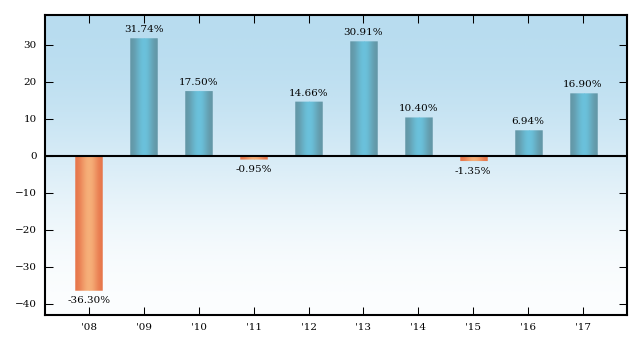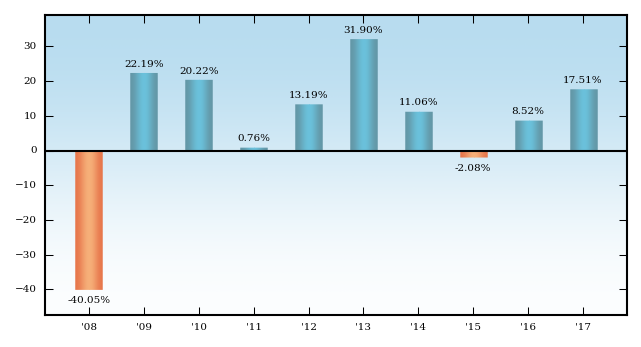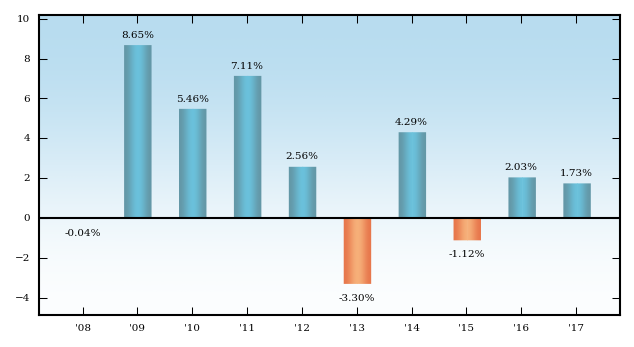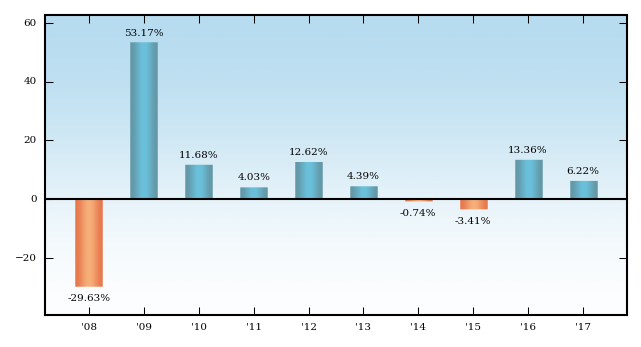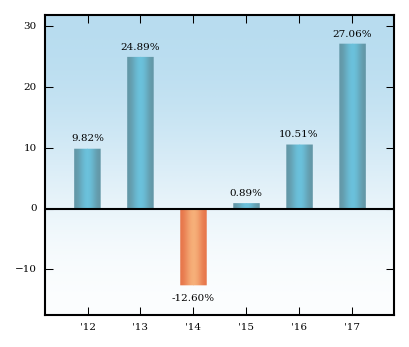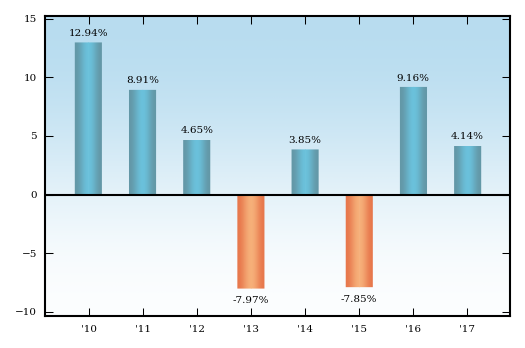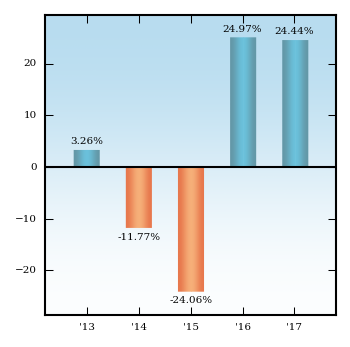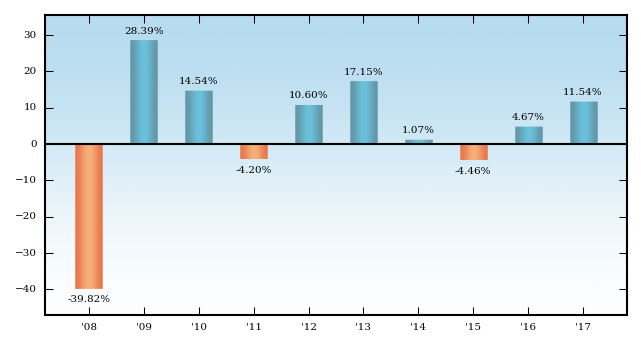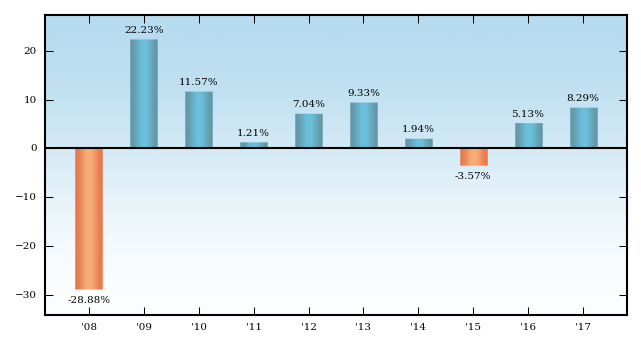&7J]>_=&[]Z]"ZZ/&3/&JR@(@B (@B (&]#8IT 0!06UN+QHWMV43E;\H2!$$0!$%4*&3H
M$01!$ 1!E"EDZ!$$01 $090I9.@1!$$0!$&4*63H$01!$ 1!E"EDZ!$$01 $
M090IOG[KE@@7'[_S.CZ>^1IVVGTO+/[R,UQP_7!TWFV//#=__+8,;_]G"FJ:
M[X#OOIZ/@X\^ 7\_>0 6?CH'#X\9BB8US0 .W7;&Y?<PXTZ[
MXHVIC^/9^\9A^.0IV?N<#?
M\L+\>??0PC'GPFL+01!$$0!%$(&7H5
M1(O6;;!A[1KLN-.NV/#76NS6O4?>_>\7?HE$/(YWIT]%K+X>B7@,IPZZ(GO_
M_5?^@^\7+D#MYHTX\L3^Z+3K[FC4M :;-VP &S>N!Y-JFOPQ/A;<=ZUPR!5
MP([C!$$0!!%FZ,L8%<3B+S_%D^-'8[?N/;'TZ_FX]HY)Z-!EE^S]V6^]BG'7
M_1\>?_\+M.G0$<\_>#\7?87N!QZ*!7,_1)/J9CAUT.5%3#5!$ 1!
ME"[T90S"$NO7KL&8*R_ K8\\A_\;^B^<=O%5&'W9N7EN&C>M1K,6+=&F0T<
MP)[['8*%GWX, *AIW@*MVZ>N-V_9&LU;ML'WB[X$ !Q[VMD8>/GU.*3W"7CC
MV<-<.PI78S%GTV)\"4$@1!$ 21@0R]"F'SAO7@G*-QTQH
M0/-6;9"(QZ H"OYC=XS$!3>,@"S+D&09 %"]?7/4;MH82!H)@B (@LB'
MAFXKB&D/WH/5*W]#FPZ=\//2;W#B68.@)!4\->%?F/CBNP" SS]\#Q_/?!UM
M.W;&[S__@ NN'X$=VK3#[#=?P6MF*RU47U']YCIP&[L"?*&ZS\/QJA=IPK9SK71/=,XO;@OL")V[R0L>O6;+]
MB-M24';CTRL+O?*Q>^X5=NJ[V[;JQJ\Z;FW^<>M!DRZR .DBX67210[CMTJ%
MZ2*KA'][%:N-O%@*5B]NIPK6[>N8DP9F%)_E[@V+[D7^BM'0O/"??O.R_1""
M W]JOT;7_%*P9O*6FH)U&XZ5.$@7V3LWDL7L'D"ZB'21M7!+41>YK%LETZ-7
M,?CUIN,7Q7B8A8E*27^IR4NXI]3*O%+:HAZ5DOY2DS<$D*%'$ 1!$ 11II"A
M1]B 7J7\A?*7(*Q!;<5?*'_+B1(S](I=^8*(W\DD$X+P&M&LZR#B+"9.)C@5
M"])%1*5 NL@MX5^,D2UD]1(W$:*%[!GW'/EAB,(QF^%IY-0HF"P#D@0%
M#!R # XH"G@R"9Z, XDX>"(.Q&/@F6,E 9Y, IQCI_8=L.?.NUK,.ZWL=JZ)
M\M8H7+UCNS*(XLC =*[IR:A7CFI_VC#-9-2O!_I^K=0[HS3IR6FE_<+$C4AV
MK;S:]NZD'*VT+R,Y21>)X[):!XWD%,FA%X:5]F@$Z2+Q-=)%8MG]U$7N#+\2
M,/0RF%4.HW-M9NE5("OQ6U7N9@U6S.&GBP#L@*F
M<# .,,[ ( %(_3*PM$BICM\X5W*&7B())!+@\7CZ+V7L(1G/&GKQ1$)''J,*
M;D69:Z]9:0QZ9>,D/BV9]!CY,RL_/;\B?WH/!CMA&[G1RUMU.LT>)'KAZ)6]
M585F)8U&89D]U.SF%>DB8ZS623-YG+93LW/21=;C)%VD'Z997'[I(FN4D*&G
MQFT&>)>!UL-THI2LW'/BI]B$52ZGN'G@N?'GA2)R>L_N \B.&SOXK0O>SF=;%5C1OU7*RV844.9G(_*$@7%;HM9ITG760>OE>0+LKW
M7TQ=5!(]>DXRQRL%ZS1^+\+VNB^A&)7,B;(L=07KIUL_PBM&7XL5W.:AF0X(
M"M)%[MU[&1[I(F_<^A$>Z2)_*,L>/8(@"((@"((,/8(@"((@B+*%##V"( B"
M((@RA0P]@B (@B"(,H4,/8(@"((@B#(E$$/OY9=?QEEGG85QX\:A7[]^^.:;
M;X*(EB (@B (HJ()9'N52R^]%!]]]!&Z=NV*AQYZ"+?>>BNF3Y\>1-0$01 $
M01 52R"&7KMV[;!Z]6IT[=H5:]:LP0$'' +P/ &/0_RTB$%DL;1)9J>08A
M=ZGF32EB5<>0+BH.U-[TH;PI+P0ZQNW>>X$8>@\^^""&#AV* PXX )]^^BD>
M?_QQRWX3B3@2\;CP'I,DR++LE9B$'UBIH6'9C=0N0]*&\*0N2R22XHA1<3R3$-I!5?#?T5J]>C=-..PU+EBQ!34T-9LR8@5-.
M.07??ONM)?^G]NBL>^_=<,]4A2@B (@B"(XC!UTEUXYOYQGH?KNZ&W
M;MTZ<,Y14U,# &C;MBUBL9AE_R\O^!4-&S46WF,2+1HF"((@"*+T.?NJ&W'6
M%3<47-^ZI
M0/VV+7APQH=Y[I;_]#V>&'\;8O4QC'WRQ;Q[_WWM14RY=RP&W3 21_0])7O]
MP=$WHV6[]EB[:B4N&W$' ."+C_Z'I0N_P-F"-TJ"( BB- G$T/,3/Q8#.0DS
MXT<]7]5+N3+A:L/4NQY6@ER\%?:XS/PT;-P4@_\U$?L=]G< P*Q77T#]MJT%
M[I9^-1\'_OTX?#SS];SKRW_Z'JW:[XA6[3KD7?]YR2)$HE$,N/@J/#QV.'Y>
M\@U:=^B(&<\^BEL?>M9F*O31SMW.M ^O\\D)Y1QF*>LBIV&$I5Z5:ES%RC^]
M,+Q^KE6:+M(2>D//RA8=?BP&JZ@K73:>3< .<\+Z[&3:NQ><-Z, ";-ZQ'
MD^H:/#;N5EQP[2V0?)SWRC2_3OQZ23F'6>JZ**@Z$G;]$&16/;#4NS0
MN@UJ-VW 4Q-OQ_3')WL@,4$0!!$&R- CB!+@]6?GU>/J^.W'!M;=@2^UF+/QLCF=Q$01!$,6###V""#D_+_T6
M+=JT176S[0&D-M7\<]4*3\)^^(X1&'3#2,BR#$E*K?:JV;X%:C=M]"1\@B (
MHKB0H4<0(>?E)Q]"_T%79,\7?38'_[KJPNSY[+=>PR>S9F+5;[_BN?NW8J;X!+!K)Y2/;9'&/,KC#*%&6H3Q8'RW5N\
MR*^M6^IPTE[M 0"UM;5HW-B>3506JVZMA%%2&*TY+[$/JON6]UZE/RSYR'3R
M2K4/ %.YS=[S(%[3.A66/+))&-M]&&4R)$A=) B'B?:*4=\/0[TD742ZR(1B
MVS"A-_0\L?1*$2M[%Y1"OO@IHU=AASD?C?8!\"/]I;9_#^$_0>HBN_4\+/62
M=)&W<1B%&>8\\@N7::8Y>@1!$ 1!$&4*&7J$;[!*?/,B"((@B!!!AA[A&^%;
MYD,0!$$0E47HY^@Q,-7PM)69GUHW=F=OBF;_&GV-3R\NJ_>=S#@5W=<+NWBS
M5YG>I%["!@P*5[!U6SVRY9CI*F7I":P,Z=]T6TE?3R@*),8@,09 7@Z!,Y3
M87&NJAH\:YE71:.(1M2J0:^^J?P6N'-RWRA\O]JQ-CXCO6&U_=H)TXA*UT7J
M]--;8_%Q4A[:\L\5_V(, /D9:U3(F?O:%1RB@M*B
M+D#M?5%E5'H54!NGZ+Y>.JT\E'S <73:/#!Z:!@U.BOW],+1
MD\$N>G4C@YDR F*Q.%Z=_;^TY2RGML6)&&V+(P-,SAF$7 %7DD BM2T.3V^+
M@[QM<1(I-US!(7MUQT[M.ZAD$;4-M8RB_-'6/U'>BNJGWDQOH_:IY]>LW7.=
M^]I?D2Q:_R+WI(L*P]9KPWIA:^N0G?:CEL6+]DNZ2+\NJ]V+RDI]S:@]F(5-
MNL@))6+H =83[/2^E?"-"L]J0S"Z;T<&)^G4-C*?86[BLY-/=LK,3CAF96D5
MN_(%6$:FZ.6!W;IKU8@RD\,L?#/_3J[9E<5J6)6NBXS\NBDOK]L4Z2+[UYV4
M@9TZ0;K(#C1'CR!*&1K1(@B"( P@0Z_B(,N@'& %!P1!$ 112.B';@,>;"2\
MA',J.P\PS$,?['9J(,C#['1=/_*7
MRHT@""(\N-3'-'1;87 :NBT+/+/#R* C"((H:\C0(WPCT-Y#PCE43 1!$&5+
MZ(=N:13)6X(UOFB.7NC);$VE@_1H^X%;PE\,0:5G7O\SD-_OZ=-$ 1!N($V3";L
MP!@]P;DSGNMX]=5A&?O7"T!HQ1O[5?O728":#-@R[_M5QAYU,
M6JSGR2W_/!NUFS:EKW-JL<9KR_?N$[>#-VI*>&Z-(M>FUVA;UW-K5!6J9K+8QTD7Z;NV6
M80;U.8>XG)VT)SONC>2TFB?:>$5I=)KG5O+6*(R,#%;=B]JF4;E <,]J^-IK
M=O-<+4>YZ2)W!&+H77CAA7CHH8?0H4,'<,ZQ>/%BRWY9]I>E5XR*9Q"ELDP_
M0[3[QW'5=:Z*R;Q:,)W[S,2O-GQ1HS.307W?>*FD&W7@&=PHO\Q@FE]C=[ON
MV3UMN!F']=#8D=B]>\^\>XN_FH\%\^;@AK'W @"./JD_MFO8&#\N7H1()(J!
M_[P*D\?<@I^6?(LV'3KBE:FO6K,%77WV%=]YY!YLW;\;&C1MQS3776/:?B,>1C">$]Y@D09;EW+D-N8RJ
M@=GCVR@>*S(45DO[X=B/Q[H_K\B,W 81Y^H5OV/J@Q/ &$/#1HW1[YR+\NH&
M $Q_\B'T.J8/OOWRLSRY9KXX%8V;-,4+CSV S1LW8*^>!Z+C3KNB2=-J;-ZP
M'@S Y@WKT;2Z!O^^K=<6HK SSSZTUK^UPT(G3BSIKYL9L
M,V^K[=1YV\E_>(G+)-^-_3B,W5:2+O(J+K-VY$2.0D;+ON[,557KHH
MF4R"*TJ!NV0\;A*2,;X;>LN6+<.*%2NPZZZ[XO###\?4J5-QWGGGX;777K/D
MOT_WCKKW+KSF9@RZ;IA7HA(>PX' -.L_SAF$W?=)]=1-OGTXGIAX._YOR,CL
M_:\_G8NM6[;@P"..SAIZ&=G^6/D;8MOJ<=^TUY%()'#1";VP?.07OCEAR78H74;;-ZT 8]-&(.F-/PY+UW>AZN[X9>34T-&&,XY)!# "]>O7"Y9=?;MG_6XN6HV&C
MQL)[S&*O"J$BP 420=H*&2,/ /;_VQ%X?,+8/$/OP[=?0_.6K3'UP8E8^/D\
M, :\\-ADG'[Q%6C2M!IM]^@, (A$(NC:O0>^^O1C=-U[7_0]_1P 0.VFC?C7
MX/_#V,>>QW5G]\-]T][ DQ/OP%>?SL&^!_TMP)1J<)O).CUZ!$$01+">6=TZ=(%/__\,[IV[8I??_T5N^VVFV7_T6@4
MT6C41PDKC("W5PG"AMA25XL7'IN,"P;?! #X_9>?T+'++N"*@K6K5Z%5V_88
M?.NXK/M8_38PQG#&Q5< XX["A\-GM65M;5*W[#W_OTRY/]P3'#<"*R#&BF' % PJ4-Y+NA)\LRGG_^
M>8P=.Q:[[[X[EBQ9@J>>>LKO:(D*(A*)XJ>EB_'X/;=#DF4L__D'7#E\++Z:
M]S$>&3\:_W[E_:S;]V=,Q]>??0( F#7C)1Q]VVC5KCUVWGU/ ,#?>A^/9Q^C\U[,YD,%D&BT33Y90JL_QRDP$FYX;IN0*N
M)(%$JMQXNMP0CZ6/XT RD7+#%1S6?1_LTJ%#<1--$ 1! $@-W1ZS>UL 0&UM
M+1HWMF<3T22W2H,V,2;4A.XUCR (@O 2^M8MX2M4=NXQS$.W&:S3P*C<"((@
MPH%;?1QZ0X\L/8\)RLX;_,Q#GOK+JQ54;@1!$.'!I3ZFH5O"/VA8L&0@
MNXX@"*(\"7V/'G4NE#94=N[Q]N9WNZHJ-*BJ"C)Y8KRP
MR*CGE2 (HFPA0X\H&U[ZX$-PQM);QT0 .9+>-B:W?0RB56!R1&?KF&1VZQ@>
MCZ>W'ZE7;1V32&\=H^" KKNC^RX[%RVMV0]:^-"C1Q $090/)6'H93['J7X>
M<=6],&'UBU)VW &%:0];ND68#0&&/QWF5I3?\NOE$2LXT"_&8)I?]?6P%1:@EDE/.F9XM]!=
MZI^3$,*.URG@GF>)<8#>1.^1X_PFJ MO>#0[]%+&VPEVL9]A_*%( BB; E]CUY8AT5*
ME< [] *,SW0R@X?CG4&F312/9XLQ=!)!;8X@""("7OI5&.UHL7
M::K@*D$0!%'ND*%'^$9XC,JT-60B3N'M\%J&GDD6EB(B"((@?(&&;@G?*%RC
M5RRL63.9I>Q6_15SZ#:+#T.WU.8(@B#"@UM]''I#3[BG 1?<+P>T&^<8;:ZC
M/0XK S-G7I65D3^W^2O*,.TB-R\W= H3>GI$E%ZS3?2T890Z
M!KI(410,/NL?:-6N/49,>"C/_=)%7^&YAR=A][WWQ:K?EZ-F^^:X^+JA (#5
M*U?@H3MOPRY[[(GE/_^(H_KTP\%']@8 3!AY$UJW:X\UJU;BVMON! !\.ON_
M6+S@"UPX>(B[-&B/*Y$PYX5V@T:CC2HK51>Y)/R&'E"8T'(J8#5:H]:KE>9%
M(]AQ0=-5M[9QF<&E4E96ZUF8T^ $LQT8K.1!N>5)!@-=]/C$.]%YUZ[84E=;
MX/ZO-:LQX()_8N_]#P( G''D_MB_UQ'8]\!#,6'4C3CBN!/1Y[0S4;MY$P8<
MU@,O?K0 *Y
MF+4ITD6NTQMZ0X^&D4J;TBP[KODMI-BK;CU%DTQJ_WM[!EJW:X]V.W;"
M@GD?%]237DN))-HW*@)&(#??OX1[7;L" :@:=-J1")1+%XP'SMVV1F;
M-JP' [!YPWI4U]1@\NTC<>F0$9 EFD9.$+3JEB RZ-IE9+;H0E8=89%E/_V
M!?/FHM^9YUMR__[KK^"@(X[&;GMU!P#T/+@7%GX^#P"P8OFO^.O/U:C=M GM
M=NR$?0\\!$_>/QX]#SD,/W^W!"U;M\6FC>OQ\/@Q>.Z1!WQ+$T%4 F3H$>5#
MV(9N@\#MZ#CW( RB(OCOFZ^B:4T-IDR>@#FSWL&/2Q?CZ0/40''%<
M7TR?\B@NN/H&/'K/';ADR'#4U6[&E_,^#BR=!%%NT- MX1M!K[KU_A-H)O'Y
M$FH1XM%9>4L0:@9=G5L4\<8+4_'EO(]Q_N77(IE,8LW*%6C=KCT X*WISV/E
M;\MQW:UW8MW:/_'S=TNP_]\.Q]H_5F+@19>A8:/&J*O=C'=?>Q%[[M,S+X[[
M_G4+KKCY5D1D&;(L@P%HUKP%:C=MI#I)5"SEO^K6#/VEEI4E0R@I]4PI=?E#
M2AC:BQ\RE&NZ-,S]WWOXZ+VWL>KWY7CYV2?0L'#<;7ABQBS,?OU_,G_,AZK=MQ7&GG([]_W8X%GWY.3Z<^0;VZKD_-JS["[?=_VA>N+/?
M?0NMVW7 +MWV! <=LP)F#)Y E8N7X9_6!PN)@A;5$B;#;^A9Z5++PRO>F&0
MP0*!]K$Q5C+YDH\%HDO$[;6&H%W[(4*[I4G'H4DS:P5VTZRM0V*I6)X;D1^[]4+KQZ+!Z0;!/DWV;%B[]5GK
M+W,,^--6C?)3I$M$=0THK'NDB]SK(C,9U/< <5EZU<:\UD5&&Z/I7=/& 3@K
M'S]UD96R\JH^9+ J>_GJH@H8NF4ZOV;N]94^,S\^EYDPF7;SS*X?D?N@N]B,\MI(-M)%]OQ:
MO6]6]\/0QJSI(GOZUXNZ9C<.M^'8O6='%C?MIEQUD3MY:-4M40'8>3LKL4\=
M%'M^"4$0!!%J0M^CY]Z6)8I%X&6G&YE=*2IHPV2=A%";(PB"" =N]3'UZ!%E
M W/9NU62G6->6&0EF7""( C""J'OT:,NO1(GP++SWEXQ$#XL77I>;)@LBH_:
M'$$01#APJ8]#;^C1,Z>T*>>R*Z:=)U@LZVE\Y5QNA'N6K5Z-^=__ $ ") E,
MDL#D""!'@4@$4B1UG+H6 20)8 SU"D<#B0&< UP!$DGP9!P\$0>4!'@\#B03
MX,D$H"@ 3P* T\DP)4$H*0,/8677,LDB- 0V!P]15%PS#''8-"@04%%250:
M9/001 @@HXP@PD1@/7JC1X]&MV[=4%M;:\L?#2.5-N$H.^^E",L4/=?/5)T5
MM^$H-R*L&->/TFYO!!$V2F+5[2NOO((==]P1^^VW7Q#1$2&!%+-_L((#@@@+
MU*-'$&'"]QZ][[__'K-GS\;$B1,Q90??>)=*GK9F,#,11V7HG;L$0YXL]&1U0GB7+GT0EWXN%[[O \7-\-O6'#
MAF6/ITR9@@\__! WWGBC9?\?+?T=VS5NK+J26QLI2;3?LSXEN8;4%=Y\Z]8+
M?P'BA8@ED$S_<=)>*J^-68,J%"&"VHL9_[SN9EQ\S4W0YM.VNCH<9M#I949@
MBS%FSIR)UU]_';_^^BL>>>01_/.?_[3D+Q*M0E6TRO*^81EWF6QBFGLBM.%J
MXU*?B\(UDB7C5L^?UHW>?;-P1'$S,%_W6[,&LR2W63YHW1A=9BP3+0RYH>E
M'VIYZR(_=_$NA*7_Z:5#KV[JM3% /]^\U$5Z,R/,_!C)9J5]^:6+[%(8GG&(
M5LNI7'511(X QQ]_O&/_5@N*:7[=A"$ZMU/QK?@S
M.N\F5XG=_E1=VRBX(O.QH"%O:O":,:2NE]EU*LI8*E!]$6 BZ
M?;NL^Z$W]&P]3]TJ E(DGA*T+>2='6=-ZJ#2%G2U#*T-6TKMNY1D=8"Q>-X+
M']HZ250F ;=OM]'1:@:B;/"N[578A.$*2R[A-U2A""),D*%'$+J$]X'EF634
M34)X#E4J@@@3Y35T2X2*TB\[?>F#3%LV'M6\#L_BUK$82[O3XDC=H<889Y_?"V
M8E*=)"H9&KHEB#3&W[$P=%!RL((#@@@+9=30"*(,H!X]PE>"'KGEGL9J]@FT
M8* >/2)LT#YZ!!$<;NM^Z V]%*)DVOU*H)$_KW&Z;;9=?WI?WK.;)_[ 6$8]
M>RV#N QSP[9>63]&,NL]>IS4+[/\*;R7]>%;T>JES9MZO?*WY9@P9@3VV'M?
M;-RP'K6;-^&6.R9 DO('&W[WPU/0HF4K ,!;K[R(E;\M0RP6
MPV=S9F/2E/^@:74-[A@^!&W;=< ?JU;@YG_=!0"8^\$L+%HP'Y=<>Y/%]%C]
M&JW:;27K(K\Q:F]>MC6[>%F&7M<'/W21%S*(GE%:-U;"#5N]SO\:M#TYG.@B
MZY2 H:>7>-%U*P48A/)R&H==?U;RH'C*.C5>O-VY8A^-..@7'G/@/ , E _OAS9?^@Y,&G)GGKM?1Q^+R&X85^%_XY>?X
M?,YLC+I[$@"@SRD#L%W#1ECZS4)$(U%<
MFF8C/7;22KJH>'BA,X.,/ZBPG(87A Q>/*/"6*_=Z PGG0K6";VAQQB"7RE:
MQ@29ET&7G?YB##\B"RYMOL'T]VG7LA)/3AN!K_WD63:JK\?3#D[!IPWKLL_]!Z+++KJBNJ<'&#>O
M6,J8K&[6#!/^-1Q7#QT)6:8IR9X1L$ZFYP!1R;BM^Z$W] C"*MX;>17P9.$H
M^MSYKS[_% T;-\+1)YQ4<.^BJZ_#WCWV!P!<>]$YB-?7H_\Y%V#E;\M17U^/
M)U]^"XE$ OV/.@0[M&R%/?;I@9X''8J')]Z% _]V.'YMC#,K)"Q:,!\O/O,$[G[D
M:>']C)$' <==@3F?# + -"TN@;[['< " 2B6#/?7K@\T\^!@"<>M9YN.3:
M&W'4"2=BVI./X)_7W(C)XV_'53>/1.WF39@_]V.?4U7I5, +$D&4$*$W]!C]
M>?H7-$&FS;L>/:;Y+6ZZ1/"" Q>PPM,@_N9^, MOO#@-M]_W;\B2A'=GO (E
MF<3JE;^# ?CUQ^_Q\M0I6??+?_X)G7?>!0S H4<4V1&09DBR# =B^>0MLWK2AZ.VP'/Z"IMCII3_Z*^:?&VCHEB@?
M=!X=>RN>
M?^M_:-RD*6:__P[6_+$*]?7;L&GC!EQ]\T@ 0+\SSL:/WRW!_7>.1BP6PWX'
M'XHCCSTA&_[_WGD3;=IWP&Y[[ 4 ^/NQ??#H_?=@Q?)?,>"<"X-/<$5!/>$$
M$2;(T"/*!UT;S8[Q%H)):Q7 GOOTP!?+_A3>>_ZM_P$ 6K5IB_N>?$[H1I9E
MW'C;';KA__VXOOC[<7VSY^?^\W(7TA($090NH3?T:+55Z5+6JVX17-I$\;""
M __C)(AB0<\!HI)Q6_=#/T>/\)@ E660W]4%C/KAJ(?.$'J $IY"%8H@PD3X
M>_1 :L-3 K1Y B\[3X9NK4<55-H,X_&B/#5A4)LCS BZ?E"=)"H96HQ!% U3
M&R,TFCDM:6CD\9!R3!-!$)ZQXK?EN&?T".S1/?>YP1%W%GYN\.W77L;\3S[&
M]LU;()%,X)JAHP ;[WZ$OX[\TUTVZL[%BZ8CV/[]D/?4P< &Z_)?VYP94K
M,.SVU.<&YWPP"PN_G(_+KKL)1#@@0X]P#$.I#(JFK2$380MOET;J"")<4+L)
M$QO7K\/Q_4[!L>G/#5Y\1C^\/OT_Z'=Z[G.#JU>MQ,0QH_#NYXL -=>?![>
M?VL&>OF*+]W"!13$)OZ#'&P&@6KG<$G)6E5'9V#-<@ZZ5A/#X\
M4ZG-$688UP\?IDI0G73,GOOTP)[[],B>?DYYW^SL.>^/;+7#CBT
M%V:]_2:.Z=L/IPP\)^MN^<\_8;<]]@1C#$UKFF'3AO5@C&'CAO6H:=8,=]\V
M M<,&P59EH-+8 7@MNZ'WM C2I?25\NEGP)3BIS$>"*!M9LVIV5)S<1BF266
MZC^D?EGZ>&LBB2I9@LS2MB[GJC\E>\QY>KNF%E
MP>?ST+!1(_3ND_^YP;5_KD:3IM79\R9-J['VSS79\U@LADGCQN#SN1]AY+B)
M ( .'3MAOX,.Q4,34I\;_&'I$K1JF_K@11
MRI2X+;J^M@Y/S_H08!(@26!2!"P2 2)58-$H6+0*+%(%%HD"D2B8+ .2G#+^
M. "N@">30#(!GHB!QU-_R!PGXN#)!* H %=P^F&'HDN;5L5.=IE3XI6R3%GX
MY7R\\/23F/C8,P7W=FC9&DN^69@]K]V\"3NTS+63JJHJ7#]B-#9MW(!_''DP
MGGKE;73LW 7]SSX/ +!YTT;<<.D@//C,"[CPU+YX^K69F'37[?A\[L
M_B>.,"3TVZL4^[,CY?@7)*6=+N.>B5"DS6WGB<[71()/F\V$.$QWL=M>N?P%
M3;'36^I_<_XW"S->?!YWW)_ZW.#,&2]#22;QQXK4YP8/.ZHW%B_\"N <#,#\
M3SY&[Q-.! /PQ.1[L^'4U#1#H\9-L.JWY7GACQLY%-/P@LS/T#KMNUPW?#;<-N-UZ)9\^;HO/.N.*;O
MR0" >"R.43<,1ON.';%B^7(<=5P?''S8$=GP9\U,?6ZP:_IS@T<=UPV(_G'CJZ0" ,<-N0-OVJ17%M]P^
M'@#P\?]2*XHOO[ZT5A23H4>4#[K/<[N63 D9!FY%]=PX=DHHK$W"$Z@LP\2>
M^_3 U\O7"N^],/.#[/$))Y^*$TX^M<#-I=<.,0S_Z./[XNCC,>2@,P:4MZ/H?SK2QPE/+A:UR2/K$$XJA
M1ZC<"!$G]3\=G\[Y"("XCG3>>>?L<2P6P_QYN5///#M[;]DO/Z97
M% /5-378N'X]& ,VKE^/FF8UN'OT<%Q[RRC(@1!^$Q)=,!P
MPU."( @S7IDV%2@-/2\F(F:>"?1"&.SST8NRLP/7'89D
M>3]>X20X;5VT,G)J>-]M@0H"#[+0X<.
MQ1577 %%4?R.-H]B*_/J](KB%;\MS_,W
M=L10W##B-LBR#%E*^=V^10MLVKC!4*8PM77?>_36K5N' 0,&X-134Y,\3SCA
M!#SWW',XYYQS3'P2?E"9S_6P-#?O\"Q%8=)&!$$0-IGSP7_QQLLO8OWZ=7AP
MPETX>]#_8?&BA;AGS"A,?^>#K+O_//TD)CS\9)[?>#R.D:H5Q4':%84
MMU.O*#X^M:+XMV7+<'H *XJ]PG=#KT>/'NC1(_?Y%451T+1I4\O^LQ/#,_W*
M6DM%?4\-U[C1(NJWUH:GU[?7Z?:U8:GKR!#Z#.AVE4;EE
MCC-HRT%]WTH9FG5:Z.V -']
M8%Y!=,M-?Z2)=
M]/+%R(V5\+3N!6GL]?>CT.OO1^6E\]##C\"A[WR0Y_[1YZ87Q''Y=4,,VW'O
M$_JB]_%]L_)<>,D5QNU1A-$SRHHNX2BMQ1B??/()&C=NC'[]^EGV$T_$$8_'
MA?4:O(/($MMDA!
M'@1MZ^72:W!/?<*,\L0H7&:@JWP8NE4_>8S29I0&/;]Z8?E(0=[E:1:N+X->
MO2YPKU/? Z^0)G';N6=5[Y2K+M+%!Z/=U-(SN&^[W-SKHFP>Z/HSB,-*7'IQ
MF-3;;Y?]CE]6_PDP!B:QU%=F)!E,B@"R#,@1,%D&2U^') &,87,\B:91.?N%
M&2@*>#*1_2H-DHGL%VBXD@0XQW;1"'KWV%M?'ETT]2TH7:2^I\YGIK+BF%FY
MBN2R<"_]FTPFA5/;]&P@JP1FZ'W^^>=X]-%',6W:-%O^>G1IJWOOZIMNP34W
MCW KFH&!4-B"/%,%2I"B_';
MC^49?$VV:X#>/;H[3AGW
M_*W)6C@,3-,&]2UI_?;JC$GC[\#]XV[W,,04@1AZ[[WW'MYXXPT\_OCC2":3
MF#Y].DX[[31+?K_ZY0\T:MQ8>$^2),^:OIUPBOF8".\CJI# 57/ F1,",\\;
M-)HJR'(C,Z^04M%%^GC?HU<,,Z\<\3P/#8K:;9F5RG/62SFO'C(,5UY_<\'U
M+75UV+=+&\?A^F[H??GEESCEE%-PX($'XJBCC@+G'#U[]K1LZ$6C442C49^E
M)/RA5%4SU_R&#Z,I(;8)13&%0@C"$Z@L*P8J:D^193EO57 &MS:0[X9>SYX]
M45M;Z]@_O>A#!E.Y
MA1,SU4IEY@TN\S'\AAY!6$1?YY2?MBF_%!$$03CGBQ]^P \M6(XFW8J=9,N$WM"C%[G2A0<]=*N+M1Z]0E?!KRTL9CSJ^"AMA!%4;J4)
M"S@7@XQMV9JU^/:W%0"3\E<41S6KBO-6%#/($L-RA>>VC$G$@40\O9*X/KVZ
M. XDXZGM9!0%;9O5X,@ #3VW^>C[)]"(RB5HI:)OSUF3H]!5N!=CY!\XI%2?
MH*4H<\40WG9#$)Y08OJ'##W",6%3YVYW#P];>BSATV*,\J+$M'*)0;E;.O#R
M;^S^4<)91T.WY8;7.SBZBLKBT*U',NMOF.P4HTTU0[+JUBTZ*VY#/W1KJ[[D
M'),^\09U'@:QV#VP<@M0?[HFDR$VY/4\#TT"%-[V*8^#WN$AR/AHU2U12)CR
MRZHL7LCL,HQ"_>/C;J!V,(K'BZ%;NW%ZB>5X/-IZE?1) 'B8P>HOOX6N3H8$
M6[O[!IRX(/5+T)97"5EZ)35TJ\Y;IOD#G-;ME_)
MNJ@0#[MK'#0 )^W2:UUD5V^YC=MRFKG'76D./[ON11[XI1LMA:OSR5NK81D]
MF_W0^Z'OT3-31*FSS!!A9OJ_>C#!VM=A63J67:7V&[*/2?^3]3-UVH-/,J8RD *P\@LU#$
M89:[+C).@1^(0S76;?KM+8-/NBBOQG/!]?SV8Q2N?MSBM%O514%0:)@9U3'M
M,\U(E^1\>)T^JZ%EXK;6&K0ZL[ .&.DBMRTJ](:>-?O6JRQBFE^S\(W5H7GX
M=N6T\UBR*YL?Z)6='[(QUT'84Q=F]=*=R1 HPH3;:7-&]=I)V!9P.$-G>C/QYH(N$YWIY['5\^O>9UT.WIL$9F\7FUYT\%X/$29L6
MG?NK,T-OZ%DQ\XAPD55K[FTOV_&*._6L/7BLO!NJXP@J;;[&HTI(,=/F_7NY
M."[2)]Y@G(?>Y7 QZF19XW4C,PFO&%T+SI-H_U4_*-S&53IS]+S2TG9?,,S"
M*A4KZ>9ZT5K+M*(-<+@I6[="ISY\PH@5[H!2-=Y(#0]^@):TR8
M%*Q3?T4R]@+5BUYK%)^%+WP;+'Q@Y2D2/]*F,Y*4N>SG(S2;?B?EYM(XT'\U]Y:7-R(M7F>M1.*$W]*C+WENTC=SKO-4VA, -2V&\3LTC5G!4C+1E
M\M2W^%3&EE>=53:CMF>WP:[C7!RD3[PA*!NK&+NK5 )^YF4Q] A\CDO]7"O%
MM)7.T"WA"9D*ZE?/4-[;3A$0&63.X7E'Q4Q71@;/80!3;150[++35VCN5!T9
M"?[@=[N@$(02,2YKPZ55M]ZA'M'QVHCVZ]EB%Z_3I39@U2_$I31T
M&WI#CUJX?WCY5J)N!-FP@RZ[M! ,W%>#)?"TZ<3#LL*X"UJM],.2-B_(I4F3
M2:1/W,.,'NS.QPK4#U*NO4'EY@E:(]IX6,\DT\V:5I&L(6?U?+V"<(+NWQ8,0?+,#?=!"X^#1ML#YA8>@@>HJ(?45"0;
MB2]N[W+YXU<5HO+R#W69&3M2C5VED&KJUMSF+82(D2EAWB--N*O-5H-98*/9$W+R'JPMAM$._8>FI],+8
MU/;JAJ)^EB'J]N"%@9<)4QLVX0VL&[1NX%V]TZC 5U1UK9><]^88GL_1&H^V6UU,0.0,YF+3IQ<.
M[-8H[L+7#N<'5VZ9F'@Z/JV!YD0*;7KRPU6GS*\TEK\NRN2B2'=P%[5'N! #
MP=;)M[M?JW2#+C+%,GILTL+'=Q
MA=_0\\K@+987&)[JX)VB:R2:R>ME.W<93AD,W5JD')6$$R-/\T;GA<&G
M__84?*;GWNG4U^S/T>,"?\6L0MH\SAX[T&)YACDS4&0!HLU;KY1TL=,EI!QU
M41[.$J@WE:#LLZL(B/+4S52)3)AYQK_5L5L/7[ZTO8O::,P%T0_3MMT6HHH;
M^AZ],+R EQ6\T'CQ:LLG
M[Y@Y?UL3#;NH[P6)]F7#RD3[Q 99W;UB%[O*Y6;?W"D](;6
M&+)KS#"#.7K@ >M_B$>K]'N>K87%D)N.) HW"-S&53D]>D2*]%N6J,=$M\&*
M@D$(%2\KE$G4>VD>#!<:"F%)L[;LG+R)9Q^@O/#A6BQ$P1WN)GOC( Q5B-)YXSZJSMN]&O88,,O0I$V^/AI"?'J(N\
MF&@?%'8:>&%7?V[VF%=#B6X0QJVZ:"6MZ@=RL7HHQ;""A[M(3B.T/]J711&EIDM*
M8NA6_=8LKC< " 241!5 OXJP2\G#_I9?SJH0U7\G%C!6RE]T.D(!0=-T$/
MW8IZ]:S*H>WV5_O37K<:IEHTNWZT\0A[N732:R9+WA G,S?Z_&H71F':R6^]
M86B1XA<9[2(C4^1/;QZ9F7Q."+LN4N=1?C[P]*\Y&=TAFIJ@(#_/[;Z$6I6A
M4A$]!_2>,493(10=-^I?NW(9/>N,VH7V94$MA]7V))I&H,7K%V,S7>26DNC1
M8YJ3PF$"G^*R=,.E6XM>O32%"HK;"2B8S,QIA%+RC9[&6%[IC6C3:,
M"M=%^M=31U9>;K0&GLB@L)P$EOMQ529^%JH7N) M\YJOK=-6#)M<&.;BN>GQ
M,GN.F"5=_:+A]?"K7U7"BBYR0^A[](25NE@-," %ZROI5;=J\;1OTMIC+7J-
M1MVH&)!:=>4D'USDG;8WA@.0;#1SK6+0OKWF*4.W96S3O[!GBF72:,V_5@EK
MTY95-%[77P.MG8K7Z?)(LKI08)0H6H>!DWO1T#[GK!I.>KWY
M>;K?S[1Y;/.41(^>GXCR+\QMVS7I5;=&;]M.TJ_7M1\HJDCSWT"U?0UFY,Q=
MJ\9O,7"2QZ)>$Z=A>86HOH@>. 4&FP9MG=:&6&'O=Q*"=&&R=I1B_QR-S:>??99=.G2!:M6K<*$"1,0B5B+.H@>]%)3L%ZC-P=&6\&M
M*M[L_:"7UZLB$QD.UF7)J01MCX-:6025-G7/2.9<_0N8]YI84;EZ\T3\1$^V
MPND /-MSR9'SI.[%T];/7 \#R\NS,+?M4M)%HI=%[8M184]";EA-.Z]7VXM7
MK/96UJB,+[WR S+MC FW8,D+3E,HVC(,LLQR=80)=:7>2V[NOO@E1!2/R+^?
MN W?]QZ]K5NWXMQSS\7$B1,Q=.A0-&K4"),F3?([6L($O3<>JSW&HDK.-']%
M_]AM&O6PH-J ,!JZT!H-8>A5L".32'E#<"UC-!5#,>?#"LZL&*BB86CUD&(8
MRJU<,2HC*_5(9'R+C#S">XQ>$G-EJC^=0M]/[GZQME?)R /5L9[>-YIN( HG
M>Z_$*J?O/7KSYLU#V[9MT;AQ8P# X8#P&Q&-0XG'P9!PL&0=/)L$Y1_V6+:@+L/SB]=M2;V62!$F. '($2"J0
M(@D@F80420+)))@D W($3)+ TVEC7 %7DJET)1/@\3@0KT^G,96VU+TDP!5L
MVQI"(.
MGDBG34FG+#IMB1B4=-IX,@$H"L 5; VX3I8KV[9L2;4W)J7;DPPIF03/
MU,E,O%(!%"7=GI+@\5A6
ME_!X'#P1R^I/* KBC ?:UNJW;44B72_1I8,?8A$!\'2Q!?"1*<46P$?*N=S*.6WES)3!Q9: <,(#EQ1;
M O^XL]@"V,#WH=O6K5MCTZ9-V?--FS:A=>O6?D=+$ 1!$ 11\?C>HW?PP0=C
MU:I5J*VM19,F33![]FSTZ]?/LO^%/_R*1NEA7RV2)$&694/_5B>B5P)6\L+*
M"B.]K4?44)[G,)H38KX2S-I]JVXJA3#DA?+S0BC3Q@(2 V0)+!*!%(V"544@
M165(55&PJFCJ6C22&OZ4D1IRYP!7%"A)#L13PYM*?1S)6 (\%@>/)5+3)1+I
M(3>%0[YX'%BK3D5.M37"K(N2G\P _^ Y(#UDR:*1W%]5%'*#2*KL(E&PJ)QR
M(TG@D2JP1 R*PH%$$CR>0#*> &(Q*/5Q*/%$NMP2N7+C0&38\S8E= [IHN"Q
MDQ?)9!**HEVFE!JZ[;YK9\8:=.K4"5NV;,&55UYI
MV7^S9LVR\_L(@B!*!:510R2J4G-!(3.P2!125 :KDL&JJB!512%5I8V&:&I.
M:<;0XYP!2C)EZ,D,/ XDP:"PU-(B#D!A )< )!FXPA%IU @2Z4K7)!MNAV15
M!"P]CXU%9;!HNIRJ(JFR:Q"%%(T T0BD/$,O9:#SA 0N,R0E!C .!4B7': P
MGBLW#E11F1$F5$6CKOP'LKW*X8*,1]8YF'*R@)RKC
MAF?OB]88$_Y1V#?(P2 QCMS7%[C&!%G7J)Z9H^[;$6WAS?),/:ZY*][#3'P]M]VKFW(A722B,#6
M;A]'EG>ML&2T95UYD"ZRA]LTAM[0*W>\JJ254-D)=U!=*P9ZCR*>-UR;.0'5#Q&"WEB6V4XX9<#ES.R,#[6!ESDOQG=GP@O5M6 )OZ%7[EUZ
M!$%4 (5*3#3,)Z4-0[6A4!B.Z+L&JF_"$1XA6B^9;]!I>_2L??11$R:5&6&&
MRSI"<_0(@B!\H[!'"-DK^49#H4_]B?[YX=-]?
MOSX0A%^$OD>/.O0(@BA=1%\%91H7N>&_S+%V+A[/,Q#$7Z4F7>D-3'!4Z$;=
MDU>X8EILE*MGIF6,16M]@$1EX[:.4(\>01"$[V3,L$)#36TT2+K]=IEA0K4Y
MI^[-HQXB;\GD+4-^V6GGZ!FOQ,WOUD$3B\4PXN8;
MT:9M.RS[]6>7T_^-BQ<]4?XAWKOP\+\YF#I^92%,%49J0=R
M\\-)_W(J1\)_0F_H!3T<\!^^&+18M15565Y^[V
M42.PWP$'XKP+!N'[[Y;BHO//P4?SYF?OWS5V#';KNCOJZFJS\D^:. &//O4T
M%$7!)8,NP,&''(J''K@?IYTQ$,W)R".(LJ)P"##_(:^=P\7 H4#2'68IW%HE
M_Z-5-'3K!P(#G>]K"/E?5L@8!5)>'Q#/
M&@HL+PSQ4"#A-=I\-=Y .=^E]DLF^;XJ9PL0=/JIMDX
MFU97X\\UJPMT])]K5J-I=77.7=-J_/GG:L3B]9@[YR/<,?X>//?,T[DT !A^
MZV@\]N^'P"0)-P\?B2'7#L8]]TW"77?;92)-Z
M#IXZ.PHWW15OO@QP6KGF%4Q[H,E4QK/EH9?=J=Y9[2?0"I=L4)F%C+#J(I?O()S'CE90! 3;,:;-Z\.7MO\^9-:-FJ=8$(K5JWP>;-F] 6
M[?+=34-,.]=X_'5PN^Q+)??\%]]]R-2Z^\"FW:ML7PVT8# .Z?< _.
M..ML_/?]][!CQXXXY;0!.&_@Z7CAU1F>IHT@0D\H%*L3O6+5C[;G+?=TSY^X
MG^\:65_JX3^=+3IH4K_'%/:^YM_-];)J-[Y6NU$*RHNVPPDUH6A&WM>1T!MZ
M#**=XNUN2BE2M#EWYU]X$R(^G?L)NG;MAN^6+D';=NW1J5-GW'#34&0:]'//
M3,&6G**^LY(LZ[(Q_)[OHB^+3
MRW/]^4+6PK=2)G;=B]P9U3>S\M$K+R.,XM"+5S]\!J0-,/UTJ5?6J_
M@B%%SM.ZTFK]%,>6[\9.N:DI;5W$\MSKR9&/WG8XJ=#SYU(6#O_::4MJ&4@7
M58HNDZ2R51_VFNBL%._EUQ^)39MVH2[QMZ.X3??B$>>> H-&C0
M %SV?Q=AUGOO !N&74;/O_L4XR_/*Q1[-W%$7!R&$W8^Q==P, ^@\8B#=??QUC1]^*\RZ\R$9:&0K3R 3W1/ZL
MHI=_=HQN/9E$Y6!4/D&C)Y^>.Z?YHO9KI?RLA&<4KO:ZG?IF%)=;]R)W1O7-
MK'SLYI](#BOQV@E3+9/:=,L/4SV9O] =%H.5O+#;AW6^BL7760>AMYFUX6&
MN[H75GW-#J2+C.7UVKW(79ATD8-0. _?^NZZNCHT:=($ +#RKXUHW+AQD24B
M"(*P1_+'!:A_=G2J4T^6P"(12-$(6%4$4E45I*HH6%444E4$+!H!Y @D&0!C
M <4A0/))'@\ 1Z/0ZE/0(G%H=3'P&,)*/$X>"(!)#FXHF"[R^Z%U*9SD5-=
M^L0_?AGQ]Y\&8PQ,CH!%);!HNIRJHI :1"%518%H%:2H!,@1,$D"(E$@$0=7
M%/!$NMQB,?!8'$I]'$HLKBHW)56V !K=^DJQDTR$G+JZ.K1K40, J*VMM6T3
ME4B/'D$01#F@[M$3#<.J70J&:+-A:(:#:(Y> *1[9CA+GXE[\M1_.7\9M+UZ
M5&Z$_Y3 '#UJ"@1!E OJ^3SYFDV]WE8]-%CXK0RN.6=$801;NL(]>@1!$'XBLA0,S+DQ+U%AG.-PC<#IPS0SJ?,/^<"
MH]PXG,RQUE G"'\)?8]>'GHO1Z+%1D8+DT3A&MW7DZ-P7K585KUCD0QZ[JR8
M]%9UABC/[-S3"S,C@S9_C&03Y:7(G]XUL_(TBE^OGNA=LU..(G]&^:<7IM.R
M,HK##+V%=W;KNY/V8819?3*RIT2R6:G?>FFP6AZ?Z$(CPL1 8$R_
M;$D7V=)%D6X'06K>)G6),4!B@"2ECR4P.?4+B4%AJ=XY+C%@ZT9@NQIPSE/E
MSCF@*& *AZ0HD)347$HH'%SAJKJ!PG+1RDJZB'21"\)OZ#$8OLCF73-S9W3=
MZGV1.RMQ67%OQYV97ZMNK>:GU3CT_#I-LYD,3LK+3OC::W;CUOIS4O^=C9G-:R@[21>8R5*HNLB>Y_RHH7X[@B"L0X8>01"$7S#M?+K,
ML"N#UN@K_$*&WL0=K0%(AA]!$/K0'#V"( @?4)MP.0--/1R;W\N76H A"=Z^
MN>97?5W= TBZDB#*$9JC1Q $$5:X=F\/:,YY]D_;@\<*%EP0!$'8APP]@B"(
MP"CLR5.3F:.G_S4,G<48] DT@B!T"/W0+8U'$ 11DF3UEKI73ZW0\N?:J8=N
M,_OH:0(2A)$)BI.N)(ARQ66[IAZ]"B:H9T(E/7N"?-964KZ6/MKA6M%QJD?'5$.WVAY S3YZC)5\CUZ8VLP+SS^/[MVZXJ477]1UDTPF\7+UN&"\XY&_?> /E*^$N&Q$\^[RC3V6OE8X
M2*OSV;3TY[9*75>&HAWRBD @'^@1!$*6/:%Z>WH=UC:YIMV6AQZN7=-U]
M]]0!%\V%S'' @0>EG>6[V[='#^S;HT?V7%$4-&W:% "P??/F^&OM6BB*@N8M
M6N#''W[ -XL6X*P:?S
M/D'C1HUQXLDG P!&WC8:CSST("1)PBTC1N*ZP5?CWDD/X,[;QR 6BV' &0/1
M;8\]BBPU48[X:NB]^^Z[F#IU*O;99Q\L6;($^^^_/RZYY!*;H:CGI8CFN:CO
MB;8R4&.D(+5A.SW7DT'[U4HC-UIY1>[-TFH6IR@OM&DP\J?G5Q2V6;QJ]/QH
MX]*30RN+F=RB.,WB%\FKC5>
M?$;M2AN.D;YPDF+Z8_SF>?/QQ3)GZ?-9_V[;M,&KT& <$^^Y&V>>?0[>
M?_\][-BQ$_H/&("SSAB EU][0R,GZ:)"F8S"*U==9)9WQOAJZ/W^^^^X[;;;
MT+ES9\3C<;1LV1)]^_9%APX=+(?!D$FB-J%,<&R6&2(_9N[LGNN%:T5&LWBL
MWK,2IY',5OVY"5O/KU5Y[.25%?=.\T/ONIX?N_EG))O=O!=A)7X[UYVX<7MN
M%*_(C9WZ;12.Z%P0-M-[ #/5>?Z#N_!1KO=BRE+ALTQHI(OLAGW!A1?A@@LO
M*KBGS<\5*U:@5:M6B$:C!>&JW\O
M7;(42[[]%M==/P23)]V/G7?9!0VW:XA$/"YXUI$NLN[6:IREIXNLA&B$KZMN
M!PT:A,Z=.P, ..>(1")HT*"!GU$2!$&$!\:0F^_%4=@KI]=+I]=CI TK?6XR
MIXRP1BP6P[@[QN*WWY9CQFNOXO49KV7O77+QA7COW7< &O6K,&X.\9B\Z9-
M>/;I*?AH]H< @ 4+OL3 ?WQ[3??X(1C>Z/O\<=BWKQ/LF$HBH);AMZ$.\??
M P X[?0S\,;K,_"OVVX5&)L$X0V,:V>3VJ1OW[Y8M6I5]IQS#L883C[Y9-QZ
MZZW9Z^/'CX%(!
MCR? XW$H]7$HL=0OC\6AQ!/@B2203((K'$VNN ]RF\[%3C9!$ Y))I/9[7C4
MU-75H5VK%@" VMI:79M(#]=#MV^^^::IF\<>>PR*HF#(D"&VP\\D3L2PX2,Q
M?.0HVV$2!$$$BVCPI? =FYG.RV&:ZUPS-$P01*ERQ^UC,';,:,_#]7W5[5UW
MW846+5K@IIMNPI(E2Q"/Q]&]>W?+_E?^J>K1T\RAE"3)7']:'=RV,F_4RMQF
MMX/IE835_ HZ7\,J5ZECUDZTR])SZ/($T5=:/#O;
M2SNLJW:G,0:YDIVGEXV"ZJ8]PMKFPRI7J1-2731T^'#<-&Q80=AU=75HUU*_
MT\L,7PV]!QYX '???3?VVFLO//OLLUB_?CU&CQYMR]"+1J/IR:\V<%+A[<[A
M%%VGAF8/J_D5=+Z&5:Y2Q\D\@,COT;^.$\K>2NK9,T6/%@0
MD'21,\+:YL,J5ZD34ETDR[)P.MK_MW>OP5&4Z1[ _YT0HB0$81,C@1+D4@HD
M%AZELB L!"UOD9NL)'R ;#8J'.7B(@:($"+K.6 @: )X*84DN%4N1%V5Z#E'
M9:5(P5$4$(,D18 RAYL!@A(20BZ3.1_BC)-)=\_;/=TS/;W_7Q45IJ?[O?3T
M/'GR=O?;FG,@+Z8F>@L6+,""!0O\*D,PO!$168K4[95K"$%IB@;7['E*?_*[
MMO,>N@/L\&0,(I)GZ;MNB8C^I;E/VXI<3Z(TQ"BA>Z+(:_*(2 P3/2(BLSB=
M"LF>_$2K3MF1/J5M?AWADSB.1T3*F.@1$9G)/8.5=\+G^;-SQ$Z2G1C9-U3(;>U=
MDMS-&!ZU2\JW<6C%6$1R&(O,J]M7+/*W+LLG>I[,GCD@F,%$ZUW>>LL3W8:!
MU1K\_4R,WL:*WQ&CRM,S6X+/;=R/0%.Z]L[[-*Y<3=[K>ZWK-/;T+6,1R6$L
M,J]N?V*1")ZZ)2(RDR0W\8E\8N:4#?$"89^G;XE( 1,](B(S.>6NO_.<,N6W
M99+L21RU4[[P�D(NJ.B1X14E5)*__@R-Z1*2(B1X14VVWN0>4]M/4ZO0D3JK'\SAEV>ZV/56\>LVBY2IO?VQT#@\?0;2?$%NM]D
MXR[36Y[T/1.\8U%./TF7RHFW04Y=L>1HJ4>JW
MZ'$E6K[[I\+QI(?1?^/IB1U:CBG9]]RC;6IWSJK=@.%*"#T30_&Y]!B+U*M@
M+!*OB['(.('*8UPL/Z*G= "HK6]DW49NV^U -+!,N?>-^)(;48Y2&7I^@8JL
M;U: -;MLM3*-/!9%VNI7@/6S/".WU5*6WD10;!NQO>*$].M25W+7@:Y)GFL[
MK[WM=*HF $K+&(O4RV4LZEX&8Y$QM,0;?^L-N1$](B)[Z'YZ5I*]X4)NN^Z3
M)1,1R6&B1T1D)DDM:5/=\->?O-F"B/1CHD=$9":GTFE7]PIR&Z'[E>ZNA-%K
M>]YU2T0JF.@1$9E%DCQ.K;H2-<]GUFJ]LLUS=%#ZK0XB(@5,](B(S-3ESEO/
MT['>3[QP*CP"3>EYN+XF7"8B8J)'1&2>;J=5E9*USN5='X$F-Q$83]T2D38A
M,;V*YT\7(^=I] Z=2F6+S+]H]AR-HFW56Y;:>()H'7K7U[*-2)D*5S3Y5::+
MF?M":5W1STM/'8$^;D764=K?1K55[7CW/G;4CB>?G['BJ56U4[=J-V+(+).D
M;J4Q%C$6R6W#6!1ZLER=S0(3.JQUC$6.3/-HQ%OK<)1BS2(R02/?\9<6I#[ ,C(G\8\3VSQO=4
MZM$383&_ \(D2.%A0'@XI(@>D"+"(45$0.K9 XB( 'I& #W"@; P2.$2X&@%
MPF\ .AQ 1P?0PP%$M$'JX8 4T08IH@UH;8?4W@ZTMT/J<,+I=$(*_Q<)YT0!
M8:-8Y'1:[P*/IJ8F1$=' P!^OM* J*AH=#^1XJ*TS+M;(A^:VJ"L7/F^WII?(\WW>M8\070+2=GG5ZOE8JSWM;N3*,K,_H?:%4
MG_>ZWLN4MM-R/&@Y!K6\Y[U<;D3+U_OP6B;:/BTQP[5,I(^,18Q%KM=*Y7EO
M*U<&8Y'\MHQ%GONAJ:D)??O$ :&QL1%17EH^ZN0N!/0+G!2^\OC]R9;'\&
MA47*T_I:[8LO\KY I+">4AM%
MCB7/Y6KM]PZ:OLKR59Z6=GF_5BM7M"]:/E5SN-J:=^N6/">SV1?26W
M'F.1_#J,18Q%GJ\9B[J6YRL6B7X.\D(@T1/AWTXPOSR1,LVH4Z1LH^H5#4A&
M\C=8!+J-9NUKH\O76J_9;0B%[[=993,6^5\'8U'W.AB+S*LWF.7)"^'I55P9
M/1&1'D;%#\8B(O*'N?$CA$?T I,)$Y%=F3VJ040DPMP8$GHC>HRI8KB?".!Q
M($K/?N*^%?>M=OO?[_I#KA]QR(^I3ZX-:'[66Y_V>7-E*QZPG
MM6M]Y=;7>BPJ'==*VZE]7T7:I><[K52W)SUG3AB+Y%][MX.QB+$(8"Q2J]N3
M"6=QK7_JUC-82!YQ0^T&+;U?)",^:#T!UM=VOMHALJY2?:+KB=;AB^C-95IY
M;N]]8Y3:S6Y&U.==IY[RM>QGK0%6ZW(S ZQ:?68'6)777>**K_(9BQB+U# 6
M^2Z+L4A;+/+S&+%\HN?^3DA=E_G]Y:#@",3GIB=8&%TG69\D\U+C+Q;&HA#&
M6$16X2,6^?N1AMZI6R(B(B(2OD-T] #)%)1$%4$I!$[_SY\Q@P8 "V;]\>
MB.J(B(*J;.=.S)TS!QL+-F!V6AIV_/WOLNMMWKP)_SY_'@HVK,?,&3/PS]V[
MW>]5[-V+^?.>PLOKUN+9Q8O0WMX. -B_?S^>6_(7+'UN"?;OWP\ <#J=2'O\
M<5R^?-G\SA%12#']U&U[>SMRQ<<,&;/_;W]#1T8$_S9V+<1]\@**B0J3/GHU^_?H%H;=$
M9&6FC^BM6K4*2Y8L09\^?B=/(#&Q<[VOO_H*M_3O[WZFY80)?\"NCS\& /3MUQ>7+EW"I4N7T.]W
M_5!34X/*[[_'C,<>,[M;1!2"_![12TU-Q?GSY]VOG4XG)$G"U*E3FS,7+D2%/[1D3&O9&1D8%1HT;!Z72BK*P,0X<.Q4,//83,S$S5[9J:FA ='>VS_%6YN/]]2)*$]__Q#_3LV1, \,LOOV#,W?^&__G\"PP9,D1Q
M^]K:6OQA_+VH_.$8#AT\B)R<%=C_OU\! /[KTT]14+ !7^S^9Y=M"C:LQVVW
M#<'5JU<1%A:&QV?-PJP__A$?EY>;UU$B,L6:%_/PUS5K5-=I;&QTC_2+,O74
M;6EI*;*SL[%LV3(D)24A-3759Y+G[6+]95R[WB+[[X65JTQJ.1&1-G_.RD+Y
MIY]BUR>?8,OFWT;P;KKI)D1%1^/_:FL! &?/GG7_A5ZP8;U[O82$!#0W-Z.^
MOA[)O_\]ZG[Z"8V-C0" BHJ]F#)U:I?ZJJJJO]NL@K(/'IOOODF*BLKT=C8B/CX>#SXX(/"VT9$
M1" B(L+$UA$1&:NUM14+GGD:@P'JJIJY*QNX9EG%KC+
M[^CHP(IER["UN!@ D):6CKS5N3APX&O\.2LK\!TF(K^%AX?+7H[F;PYDZJE;
MO3Q/W?[2<%7S,"41$1&1'30U->&FF-X +'CJEHB(B(B"AXD>$1$1D4TQT2,B
M(B*R*29Z1$1$1#;%1(^(B(C(IICH&<3A<&#-BWEP.!S!;HJA[-HO@'T+5>Q;
M:+)KW^S:+X!]LPM.KV*0MK8V]+HA$M>NM]AJWC^[]@M@WT(5^Q::[-HWN_8+
M8-^L@M.K$!$1$9$L)GI$1$1$-L5$CXB(B,BFF.@1$1$1V52/8#= CN?](4U-
M34%LB;BVMC8 G>VU^H6=6MBU7P#[%JK8M]!DU[[9M5\ ^V85GGF0GOMG+7G7
M[84+%Q ?'Q_L9A 1$1%91EU='6Z^^69-V_#4+1$1$9%-67)$KZ.C YD1$1$0VQ42/B(B(R*:8Z!$1$1'9%!,](B(B(IMBHJ=1
M2DJ*^_]%1458L6(%EB]?CLV;-[N7__333Y@YNOO\:D29/P]--/=UGGRI4K>.JI
MI[!NW3ID967AV+%C@6ZF+B)].VUUQ ?'X\#!PX$NHFZB?3M^>>?1TY.
M#O+S\S%KUBQ;?6Z;-FW"O'GSL'[]>DR?/AV[=^\.=#-U$>F;2VEIJ>8YP8)%
MI%^EI:48.W8L)D^>C,F3)R,_/S_0S=1%]#/;LF4+7GGE%:Q:M0KWW7=?()NH
MFTC?4E-3W9]92DH*XN+B4%E9&>BFFL:2S[JU,M?DS=]\\PW*RLI045$! !@[
M=BS&CQ^/T:-'8^/&C1@^?#A6K%B!IJ8F].G3!YF9F>C=NW+:+]V[-B!6V^]-=#-\XM(WW;NW(FK5Z]B^?+E ! RB9!(W^;,F8/T
M]'0 G<^5G35K%I*2D@+>5K.$QI]2%I*6E@8 *"\OQ[WWWNM>/F'"!'STT4<
M@/[]^^/"A0L @(L7+V+$B!&6_R4KTJ_CQX]CT*!! ("A0X?BU*E3.''B1. ;
MJY&K;^'AXN7>Y^WW'''3A[]BQJ:VL#UD:]1/J6G)R,4:-&Z7H8
M=C")],V5Y &=3]2)B8D)2-O\)=*WI4N7(C(R$@!PXL2)D/G%(]*WGW_^&86%
MAG8MV\?)$G"E2M7
M@M)>+5Q]4U-75]Q+IUZW#PX$&4EI::W"IC^.J;T^G$TJ5+\?+++R,L+"QD1O1$/K-)
MDR8A-345L;&QJ*RL1$I*"JJKJ]&CA[5_U8KTK;:V%O'Q\2@N+D9#0P.2DI*P
M?_]^#!@P( MU$]+''$X'"@O+\?GGW]N8HL"S]I'GX7%Q\>CH:'!_;JAH0'Q
M\?$ @+ESYV+:M&G(RLI">^X)5G.%J?5K^_;M*"HJ0F%A
M(7KW[HWX^'@,'CPX2"TUUBVWW(*&A@8D)"0 Z-IOLK;FYF;,GS\?!04% L
M6+";8ZBXN#@4%!2@MK86X\:-0U555..-Z-NW+UI:6H+23JWD^C5MVC0 P)DS9Y";FXO%BQQ>O5JW'GGG7CWW7>#W23#
MK%^_WOW_A(0$-#RL[-#/LD#
M@)R<'+2WMP, ZNOKT=+2@H$#!P:Y5<9XX($'<.K4*0"=H[)GSY[%\.'#@]PJ
M8Y64E" S,S/8S3!<>%Y>7EZP&Q&*$A(2T-34A+*R,GSVV6>8.'$BIDR9 @!(
M3$S$EBU;SO7H%N<7:;-VZ%9]\\@EJ:VMQ[=HU)"N7=BX
M<2/BXN*"W%IME/IVX<(%O/KJJ]BS9P_:V]L1'1T=O1N'#Q_&MFW;D):6AHE?AT[=@S%Q<4X>O0HWGGG'>3F
MYB(Q,3'(K=5&J6]CQHS!AQ]^B"-'CN"]]][#U*E3D9J:&N36:J-V/'[YY9=P
M.!RX__[[@]A"$1$1D4TQT2,B(B*R*29Z1$1$1#;%1(^(B(C(
7IOX?@E"7,@U,X!H 245.1*Y"8((!
end
